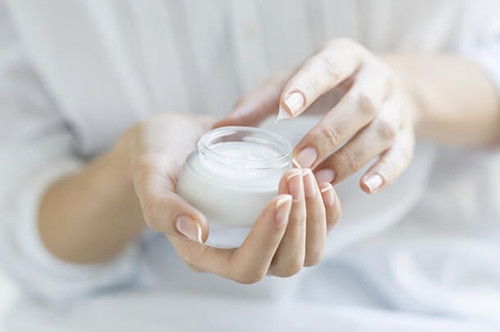
Silicones in cosmetics - are they always dangerous? Facts and myths about silicones
Content
Silicones are a group of ingredients that have found their way into cosmetics. They are used, among other things, in the production of shampoos, conditioners, face or hand creams, washing gels, masks, as well as body or hair washing and care products. Numerous myths have arisen around silicones in cosmetics, which allegedly testify to their negative impact on the condition of the skin and hair. We answer what exactly these ingredients are - and whether they are really dangerous.
Silicones in cosmetics - what is it?
The name "silicones" is a very general term and refers to many silicone polymers. Their popularity in the cosmetic market is largely influenced by the fact that, regardless of the level of concentration, they remain completely harmless to health. This is confirmed by the Scientific Committee on Consumer Safety in conclusions SCCS/1241/10 (June 22, 2010) and SCCS/1549/15 (July 29, 2016).
Their properties and therefore the purpose of use differ depending on the group or specific ingredient. However, most often silicones in cosmetics are responsible for:
- Creation of an additional hydrophobic barrier - they reduce the leakage of water from the skin or hair and thus maintain the moisturizing effect of the products;
- prolongation of the stability of the emulsion consistency - thanks to them, creams or tonal foundations do not delaminate;
- prolongs the durability of the cosmetic product on the skin or hair;
- facilitating the distribution of cosmetics;
- increase or decrease in the effect of foaming;
- reducing the viscosity of the product - especially important in the case of hair sprays, tonal foundations for the face, powder or mascara;
- the reduction in oil content of the product is noticeable mainly in face creams, which acquire a lighter texture, and in deodorants, where they make sure that they do not leave unsightly stains on clothes and skin.
What are the names of silicones used in cosmetics?
What silicones can be found in cosmetics? How different are they?
In cosmetics, the most commonly used:
- Volatile (cyclic) silicones - are characterized by the fact that after a while they evaporate on their own, leaving the remaining active substances to penetrate deep into the skin. Most commonly used: cyclomethicone,
- Oil silicones (linear) - they are intended, among other things, to facilitate the distribution of the product over the skin or hair, reduce the viscosity of the cosmetic product and its greasiness, and facilitate absorption. The most common are:
- Silicone waxes - this group includes silicones with the general name alkyl dimethicone. They are preceded by an additional designation, such as C20-24 or C-30-45. This is a group of emollients that can have various effects; from the smoothing effect of the skin or hair, to the light application of a cosmetic product, to the elimination of the foaming effect of the product.
- Silicone emulsifiers – make sure that the emulsion has the correct, long-lasting consistency. They allow for stable combinations of ingredients such as oil and water that do not mix by default. This is for example:
Silicones in cosmetics - what is the truth about them? Facts and myths
As shown above, silicones are products that are safe for health. This is evidenced not only by the previously mentioned studies of the Consumer Safety Committee, but also by the American Cosmetic Ingredient Review Expert Panel. They found silicones in hair and body care products to be safe.
It is important to note that these ingredients do not penetrate deep into the skin or into the hair structure. They remain outside, forming a very thin film on their surface. So there can be no negative impact on the deep layers of the skin or damage to the hair from the inside! However, it was this information that led to the second myth: that silicones were supposed to "suffocate" both of these treatment areas, preventing them from breathing, thereby damaging the skin and hair from the outside. It is not true! The layer created is thin enough to allow free flow of air or water in particular. Thus, they not only squeeze the skin or hair, but also do not clog pores. In addition, “skin respiration” is a very simplified term that has no real reflection in physiological processes. The skin cannot breathe; the whole process concerns the gas exchange that takes place through its layers. And this, as we have already mentioned, is not affected by silicones.
Another myth is that silicone applied to the hair adheres strongly to them, thereby significantly weighing down and preventing the penetration of nutrients into the hair. This is also incorrect. Silicones found in shampoos, conditioners or hair styling products leave a very thin film on them. Moreover, as with the aforementioned volatiles, they can evaporate on their own. Most often, however, dry silicones are used in hair care, which do not create a sticky, greasy barrier. Contrary to; their structure is pleasant to the touch, the hair becomes smooth, shiny and loose.
Cosmetics with silicones - to buy or not?
In conclusion, silicones are not ingredients to worry about. On the contrary, they can have a very positive effect on the appearance of hair and skin and greatly facilitate the application of cosmetics and their absorption. The choice available is really huge, so everyone will find the perfect drug for themselves. Silicone conditioners, shampoos, cheeses, creams, balms, masks or dyes are easy to find both in stationary pharmacies and on the Internet. So choose the product that is right for you - without worrying about your health!
: